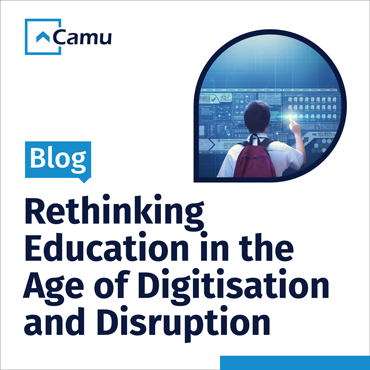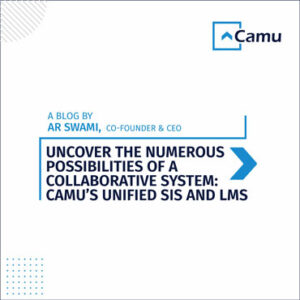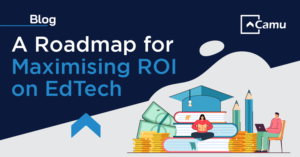
Rethinking Education in The Age of Digitisation and Disruption
The COVID-19 pandemic has compelled institutions to reorient themselves or risk becoming obsolete. From crisis management, to constructive thinking, and problem-solving innovations, this past year has witnessed a dramatic change in the educational landscape and climate.
Even before the crisis, the education industry was hinging towards deep technology integration. And for the first time, academicians are driving tech companies to create products that can actually be used!
Colleges and universities are confronted every day with growing expectations from students across a variety of disciplines. Therefore, technology as a skillset is part of the learning and instructional experience.
Our webinar titled ‘Rethinking Education in The Age of Digitisation and Disruption” touched upon the key phases of digital transformation. The discussion was helmed by expert panellists including:
- AR Swami, Co-founder and CEO of Camu
- Dr. Bala V Balachandran, J L Kellogg Distinguished Professor of Accounting and Information Management, Northwestern University, USA, Founder, Chairman & Dean (Emeritus), Great Lakes Institute of Management
- Vinay Chousalkar, Business Development Lead, Education, AISPL
- Dr Preeti Bajaj, Vice Chancellor, Galgotias University, Educational Activity Chair, IEEE R-10 (Asia Pacific)
Their valuable insights can be summarised by the following phases.
1. Adoption of technology
Technology used to be a support function; a mere tool leveraged to augment/ complement learning. The traditional, brick and mortar, set up was the primary function, with faculty and management steering the wheel.
Today, tech has become the enabler, the facilitator, the one-stop-shop to pedagogy. Thanks to deep transformation, institutions have moved from a physical to a virtual environment in just a few short months.
The key to successful implementation lies in the efficient onboarding of students and teachers, which directly relates to the vendor or EdTech partner in question. The simpler the platform, the smoother the induction. But remember, not all individuals adopt innovation at the same rate or pace.
Seamless integration also depends upon the classroom model. While certain aspects are fully automated, other aspects require physical, human presence. This is where the concept of blended learning comes in. Online educational materials are combined with traditional place-based classroom methods to create a stimulating learning experience for all.
One type of blended learning technique that reaps the best outcomes is the flipped classroom approach. In this scenario, students’ complete readings before class, and work on live problem-solving during class…
2. Consolidation of processes
A lot goes into the building of a truly holistic digital ecosystem, one of the most important criteria being operational efficiency. It is the lifeblood of an institution.
Departments, functions, tasks and activities must align to create synergy.
Administration must support academics, and vice versa.
Artificial Intelligence (AI), Enterprise Resource Planning systems (ERP), and other feats of Data Science must be used in the right manner to fulfil the desired objectives.
Similarly, there must be cohesion within curriculums too!
Outcome Based Education (OBE) lays out definitive course and programme objectives in this regard, pushing students to take actions towards accomplishing goals for the future.
Multidisciplinary Learning integrates multiple knowledge domains, crossing the boundaries of subjects and/or curriculums in order to enhance the learner’s scope and depth of understanding.
3. Mobilisation of stakeholders
In the era of Cloud Technology, Robotics, Block-based Coding Systems, Virtual Reality, and more, the need for stakeholder cooperation is more important than ever.
The management-to-faculty and faculty-to-student ratios must be well-balanced. The organisational structure must be more democratic, and less bureaucratic. Two-way communication channels must be fostered. Decision making should involve those who are actively involved in the change.
Of course, there will be numerous obstacles along the way, from infrastructure development to software navigation. However, the right tool, in the hands of the right person, at the right time, is nothing short of magic! Here’s where good, empathetic, transparent leadership comes in.
What are your thoughts on the aforementioned phases?
As an end to this blog, we leave you with a quote from Dr. Bala.
“Uncertainties are inevitable, worrying is optional, panicking is pathetic, planning is paramount!”







